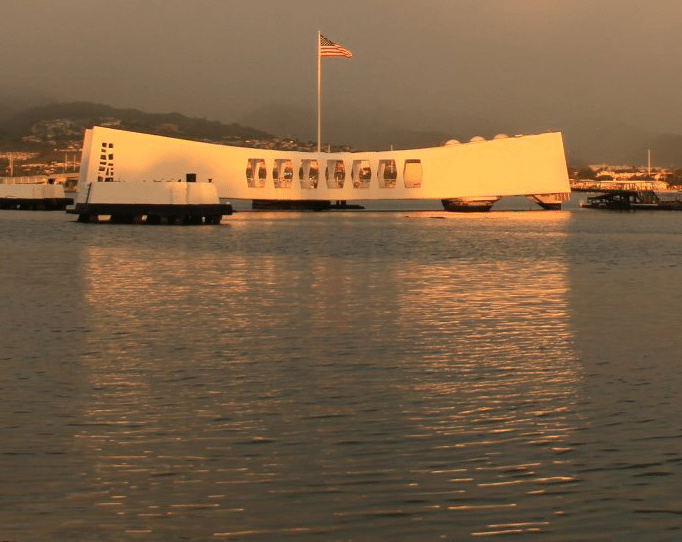Examining Communication Breakdowns 74 Years Later

“Does today’s astonishing sophistication preclude surprise attacks? It does to a greater extent than in 1941, but not entirely. Though eyes-in-the-sky make it hard to mass troops, dispatch warships or launch airplanes or missiles undetected, not all messages will be radioed so that they can be intercepted, and—most important—not every leader can always be persuaded that his or her nation is going to be hit. But by searing into the American psyche the perils of insufficient intelligence, Pearl Harbor has taught the United States to gather more information and to evaluate it better. That unforgotten lesson of a half-century ago still matters; it is why Americans, even today, remember Pearl Harbor.”
– David Kahn, The Intelligence Failure of Pearl Harbor
As many of you know, the United States honored the 74th anniversary of the attack on Pearl Harbor this week. More than 2,000 brave Americans died in the attack.
Historians a lot smarter than me have dissected the events during the year before the attack and especially 24 hours before the attack, and whether the American military could have prevented it with better surveillance and fewer communication breakdowns. In fact, people are still asking questions about it 74 years later.
I discovered that it’s easy to burn way too much time reading about it, and sometimes getting sucked into crazy conspiracy theories. Most of them contend that President Roosevelt intentionally allowed the attack so he could bring the country into World War II. But as David Kahn wrote in his article The Intelligence Failure of Pearl Harbor, “Even if Roosevelt had wanted war, he would not have wanted to enter it with his fleet badly weakened.”
Of course, none of it changes the tragedy of it or reduces the amazing recovery. Just four months later, the U.S. had rebuilt its naval forces sufficiently to launch counterattacks, in part because the two aircraft carriers were not at port at the time of the attack. Technology has changed so much since then. Could modern surveillance and communications have prevented the attack?
Even though he wrote his article a decade before the 9/11 attacks, before Mr. Kahn sums the situation up well:
Codebreakers
Remember that this was before satellite surveillance or drones, so the U.S. military relied on intercepting communications, correlating message origins with geographies, and manned surveillance by airplane.
Without spies on the ground, the military relied heavily on codebreakers who intercepted and interpreted Japanese messages that were encrypted. When the U.S. figured out the previous Japanese code (named RED by the Americans), Japan started using a new code (PURPLE).
Neither the intercepted messages that codebreakers translated nor messages that weren’t read in time offered information specific enough to allow for a prediction of an attack on December 7, 1941. Officials knew an attack was coming, but many thought it was coming to the Philippines or somewhere else.
Solved messages reporting Japanese ship movements between August 1 and December 6, 1941 mentioned the Philippines 59 times and the Panama Canal 23 times, but mentioned Pearl Harbor only 20 times.
The National Security Agency’s article notes, “The international situation seemed dire enough from what could be read, and, on the basis of the diplomatic decrypts, general war warnings were sent to U.S. military commanders in Hawaii and the Philippines three times in November.”
Given the lack of specifics in intercepted communications, it’s unlikely even modern surveillance could have made a difference, but maybe spies on the ground could have.
Monitoring
Modern surveillance could almost certainly have made a difference. One reason the United States didn’t see the attack coming was that its traffic analysis picked up no communications to or from Japanese aircraft carriers, which went radio silent as they moved toward Hawaii, and therefore thought they were still in their home waters.
Today’s modern satellite surveillance almost certainly would have uncovered the carriers traveling toward Hawaii.
Most concentration is on the events of the morning of December 7. The commanders in Hawaii, General Short and Admiral Husband Kimmel, took the warnings seriously. General Short believed the real threat was sabotage by Japanese living in the islands, and he had Army Air Corps planes parked closely together on their runways so they could be guarded more easily.
Human Communications
If there is a wildcard, it is in communications.
Admiral Harold Stark, Chief of Naval Operations, thought Pearl Harbor was already on sufficient alert, and he refused to wake Admiral Kimmel in Hawaii early on December 7.
General George Marshall, Army Chief of Staff, was the biggest mystery of all. His whereabouts are a mystery from the afternoon of December 6 until the following morning. By all accounts, he spent that morning on a recreational horseback ride and was unavailable until somewhere between 9 a.m. and 11:30 a.m. During this time, he was unreachable.
When he got back, he authorized dispatch of a war warning, but Army communications to Hawaii were down due to technical problems. As a result, the warning was sent by Western Union telegram and didn’t arrive until well after the attack.
Finally, a radar unit at Pearl Harbor spotted the incoming flight of Japanese bombers, but the army lieutenant who headed the unit told the radar operators to “forget it” because he thought it was some returning American B-17s.
Mistakes Happen
So the technology was good enough to see the attack coming. As we might say in modern parlance, they didn’t connect the dots. The real communication breakdowns were in personal communications. Can you imagine someone in Marshall’s position being completely offline at such a time today? The biggest lesson, though, is that without processes and technology that enable ubiquitous communications, breakdowns occur and mistakes happen.
As Kahn wrote of conspiracy theorists, “The concocters of these theories are unable to accept that humans sometimes do things wrong or do not do them at all, that accidents happen, that in the complex system that is the world improbable events occur.”